I would like to display all pet owners (Clients) using list_display and for each owner a comma-separate list of all of their pets (Patients).
The foreign key is in the Patient table, such that an owner can have many pets, but a pet can only have one owner.
I've got the following to work but would like some advise as to whether this is an acceptable approach.
from .models import Client, Patient
class ClientAdmin(admin.ModelAdmin):
list_display = ('first_name', 'last_name', 'mobile', 'patients')
def patients(self,obj):
p = Patient.objects.filter(client_id=obj.pk)
return list(p)
Thanks for any guidance.
UPDATE: Here's where I'm at so far:
Here's what I've managed to get working so far
class ClientAdmin(admin.ModelAdmin):
list_display = ('first_name', 'last_name', 'mobile', 'getpatients')
def getpatients(self, request):
c = Client.objects.get(pk=1)
p = c.patient_fk.all()
return p
This is following the docs re: following relationships backwards.
Of course, the above example 'fixes' the number of client objects to just one (pk=1) so I'm not sure how I'd get the results for all of the Clients.
@pleasedontbelong - I've tried your code, thank you very much. I'm almost certainly doing something wrong as I'm getting an error.but So you know the FK now has
related_name = 'patient_fk'
which explains why I'm not using patient_set (since FOO_set is overriden)
So here's what I have:
class ClientAdmin(admin.ModelAdmin):
list_display = ('first_name', 'last_name', 'mobile', 'getpatients')
def get_queryset(self, request):
qs = super(ClientAdmin, self).get_queryset(request)
return qs.prefetch_related('patient_fk')
def getpatients(self, obj):
return self.patient_fk.all()
The error I get is "'ClientAdmin' object has no attribute 'patient_fk'" and relates to the last line of the code above.
Any ideas?
Thanks!
EDIT
I've tried Brian's code:
class ClientAdmin(admin.ModelAdmin):
list_display = ('first_name', 'last_name', 'mobile', 'getpatients')
def getpatients(self, obj):
p = obj.patient_pk.all()
return list(p)
...and am getting error 'Client' object has no attribute 'patient_fk'
If I run my original code, it still works ok:
class ClientAdmin(admin.ModelAdmin):
list_display = ('first_name', 'last_name', 'mobile', 'getpatients')
def getpatients(self, obj):
p = Patient.objects.filter(client_id=obj.pk)
return list(p)
For reference, here are my classes:
class Client(TimeStampedModel):
first_name = models.CharField(max_length=30)
last_name = models.CharField(max_length=30)
....
class Patient(TimeStampedModel):
client = models.ForeignKey(Client, on_delete=models.CASCADE, related_name='patient_fk')
name = models.CharField(max_length=30)
....



